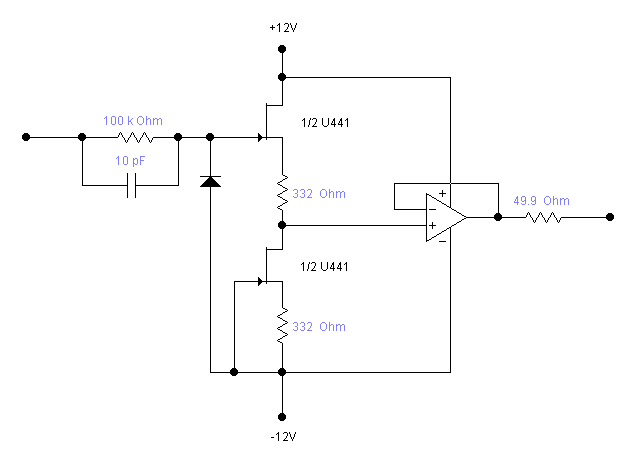In this forum post http://www.abcelectronique.com/forum/showthread.php?t=35757 one comment explains how a single-ended amplifier works, even providing this diagram:
The key part is a pair of closely matched and coupled N-FET (for temperature compensation). They can be replaced by a pair of BF256 that must be sorted/matched.
This circuit can be duplicated to become a differential amplifier, by also re-wiring the output op-amp (or using an instrumentation amplifier). The differential nature will also compensate for temperature drifts.
From this, 2 things become apparent :
- the symmetric power supply needs to be quite high-voltage so this is a direction for the design of the energy harvester.
- by selecting the proper components, the power consumption can remain within reasonable bounds (with obvious compromises in stability, bandwitdth etc.)
I have seen other, better schematics with higher performance but the cost and complexity become overwhelming. OTOH, a handful of BF256 (VHF N-FET) doesn't cost much.
The supply can be regulated by a couple of micropower LM4041 (initially intended for the ADC of the #Discrete YASEP), drawing only 60µA, capable of up to 10V of shunt (15V abs.max.) and 10mA of sinking. I don't think a scope's probe test point can provide such a current so it's well within the bounds.
Now, it remains to be seen how much the above schematic draws in practice. Linearity, bandwidth (frequency response) etc. are also a concern.
Maybe I'll have to complete my #Quick & Dirty Frequency Generator or buy that DDS from my dear friend noodlehead
 (No, I'm not shooting for GHz precision, my fastest scope reaches 200MHz only)
(No, I'm not shooting for GHz precision, my fastest scope reaches 200MHz only)
 Yann Guidon / YGDES
Yann Guidon / YGDES
Discussions
Become a Hackaday.io Member
Create an account to leave a comment. Already have an account? Log In.